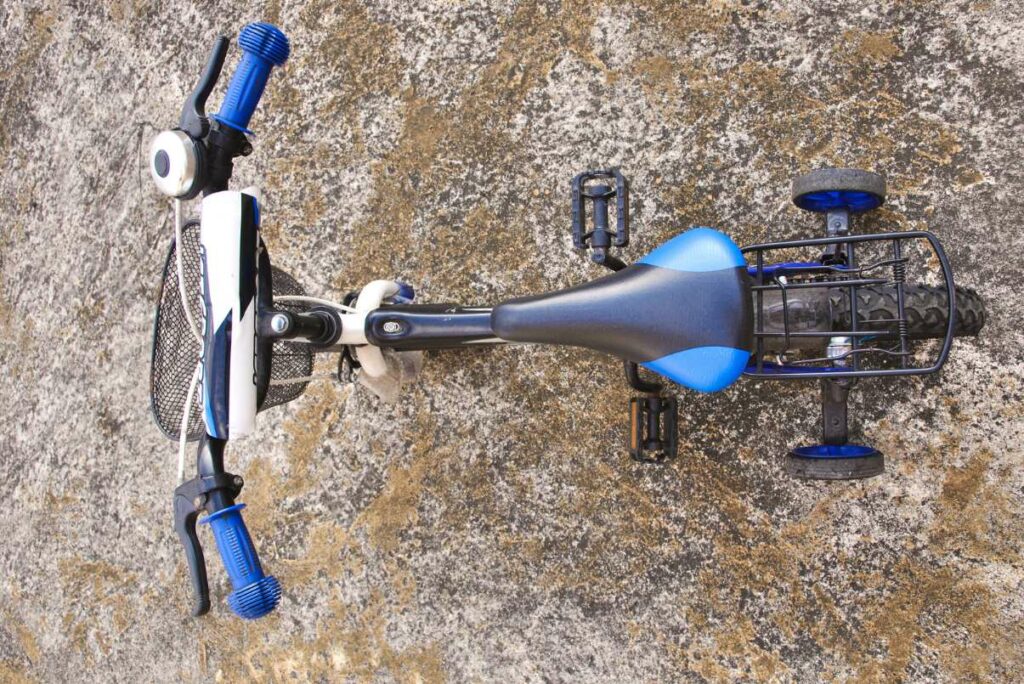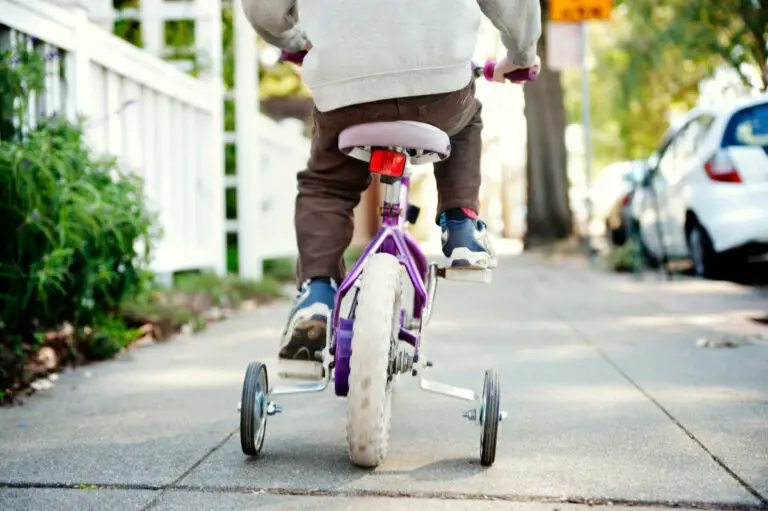Balance Bikes Vs Training Wheels – Benefits & Drawbacks

Balance bikes, also known as push bikes or strider bikes, are a specific form of bicycle developed for young children and novice riders.
Balance bikes, unlike standard bicycles, lack pedals and are designed to be powered by the rider’s feet.
This allows riders to concentrate on acquiring balance and steering rather than pedaling and movement coordination.
On the other hand, training wheels are small auxiliary wheels that can be mounted to a standard bicycle to help a rider learn to balance and pedal.
As the rider gains confidence and skill, training wheels can be progressively lowered or removed.
In this post, we will analyze and contrast the advantages and disadvantages of balance bikes and training wheels for teaching young riders and beginners how to ride a bicycle.

| Balance Bikes | Training Wheels |
| Pros: | Pros: |
| – Easy to use, even for very young children | – Provides additional stability and support |
| – Safe and stable, thanks to low profile and wide, sturdy wheels | – Helps build confidence in young riders |
| – Encourages proper riding technique | – Easy to install and use |
| – Lightweight, making them easier to handle and maneuver | – Can be used on most types of bikes |
| Cons: | Cons: |
| – Limited use – typically only suitable for very young children or beginners | – Delays learning to balance |
| – Slower speed compared to traditional bicycles | – Cumbersome and adds extra weight to the bike |
| – Limited terrain – not suitable for rough or uneven terrain | – Not suitable for all riders |
| – May not be suitable for more advanced riders | – May delay the transition to traditional bike |
Benefits of Balance Bikes
Young riders and novices who are learning to ride can benefit from balance bikes in several ways. Among the principal benefits are:
- Ease of use: Balance bikes are extremely user-friendly, even for very young children who may lack the coordination or strength to pedal a conventional bicycle. As there are no pedals on balancing bikes, users may simply propel themselves forward with their feet and concentrate on learning to balance and steer.
- Safe and stable: Thanks to their low profile and broad, strong wheels, balance bikes are often quite secure and stable. This can provide young and novice riders with a sense of security and confidence as they learn to ride.
- Encourages proper riding technique: Balance bikes do not have pedals, therefore riders must learn how to balance and steer using the correct riding technique. This can assist riders to build excellent habits and skills that can be transferred to conventional bicycles once they are ready to pedal.
- Lightweight: Balance bikes are often significantly lighter than conventional bicycles, making them easier to manage and maneuver for young riders. This is especially beneficial for younger riders who may have trouble controlling a bigger bike.

Drawbacks of Balance Bikes
While balance bikes can be a useful tool for learning how to ride a bicycle, there are certain disadvantages to consider.
- Limited use: Balance bikes are often only appropriate for extremely small children or novice riders just learning to ride. Once a rider develops greater confidence and skill, they may outgrow a balance bike and require a conventional bicycle with pedals.
- Slower speed: Due to the lack of pedals, riders of balancing bikes must rely on their own power and momentum to push the bike. This can make balancing bikes slower than conventional bicycles, which can frustrate riders who desire a bit more speed.
- Limited terrain: The lack of pedals on a balancing bike makes it difficult for riders to maintain balance and motion on rough or uneven terrain. This can restrict the types of terrain balance bike riders can explore.
Benefits of Training Wheels
Young riders and beginners who are learning to ride a bicycle can benefit from training wheels in numerous ways. Among the principal benefits are
- Safety: Training wheels can assist riders who are still learning to balance and pedal independently with an additional layer of safety. By providing additional support and stability, training wheels can avoid crashes and mishaps while the rider is still learning how to ride a bicycle.
- Confidence: Young motorcyclists who are hesitant or fearful of riding without training wheels can gain confidence by using training wheels. By offering a sense of security and stability, training wheels can help riders feel more comfortable and secure on their bikes, which can assist them in learning to maintain their balance and pedal more rapidly.
- Ease of use: Training wheels are simple to install and operate, making them a practical and trouble-free approach to teaching learners how to ride a bicycle. They are easily attachable to the majority of bicycles and may be changed to the right height as the rider improves.
- Suitable for all types of bikes: On most types of bicycles, even ones with a lower profile or smaller wheels, training wheels can be mounted. This renders them a versatile and adaptable tool for teaching people to ride.

Drawbacks of Training Wheels
While training wheels can be a useful aid for learning how to ride a bicycle, there are some disadvantages to consider:
- Delays learning to balance: One of the primary disadvantages of training wheels is that they can impede a child’s ability to learn to balance on two wheels. Because training wheels give additional support and stability, riders may rely on them excessively and fail to develop the necessary muscle strength and balance to ride independently on two wheels.
- Cumbersome: Training wheels can be heavy and add extra weight to the bicycle, making it more difficult to ride and navigate. This can be especially troublesome for younger riders who may have trouble controlling a bicycle with training wheels.
- Not suitable for all riders: Training wheels may not be suitable for all cyclists, especially those who are taller or more proficient on a bicycle. In these situations, training wheels may not provide sufficient support or stability, which could cause the bicycle to topple or become unstable.
Comparison: Balance Bikes vs Training Wheels
So, which option – balancing bikes or training wheels – is best for assisting young riders and beginners learn to ride a bicycle? Ultimately, the decision will depend on the demands and talents of the individual rider. Consider the following factors when comparing balance bikes and training wheels:
- Age and development: Typically, balance bikes are suitable for very young children or novices who are just learning to ride. On the other side, training wheels may be more appropriate for somewhat older or more experienced riders who are ready to learn to pedal.
- Learning style: Some riders may prefer the simplicity and ease of operation of a balancing bike, while others may feel more secure and confident with training wheels. When choosing the optimal solution, it is essential to consider the learning style and preferences of the particular rider.
- Terrain: Balance bikes are unsuitable for rugged or uneven ground, although training wheels can be used on the majority of terrain types. Depending on where the cyclist will bike, this may be a factor to consider.
- Transition to traditional bike: Balance bikes can assist riders to develop healthy habits and skills that can be transferred to conventional bicycles once they are able to pedal. Training wheels, on the other hand, may postpone the transition to a standard bicycle, as riders may become overly reliant on them and fail to develop the balance and muscle strength required to ride a bike independently.
In conclusion, Both balance bikes and training wheels can be effective aids for teaching young riders and novices how to ride a bicycle.
The optimal solution will depend on the rider’s age, level of development, learning style, terrain, goals, and preferences.
Both balance bikes and training wheels have their own advantages and disadvantages, and it is essential to take these into account when determining which choice is ideal for a specific rider.






